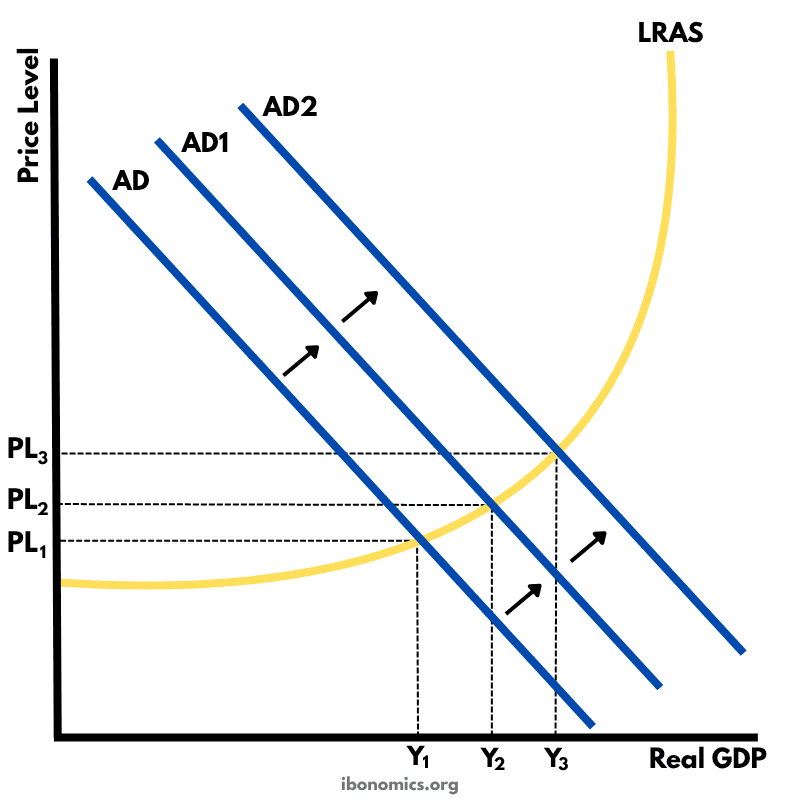Welcome to IBonomics! We are excited to launch and hope you find the website useful! Learn more about us here!
Welcome to IBonomics! We are excited to launch and hope you find the website useful! Learn more about us here!
This diagram shows how an initial increase in aggregate demand leads to a multiplied increase in national output (real GDP) and price level within the Keynesian framework.

AD: The initial aggregate demand curve before the multiplier effect.
AD1: The result of the first round of increased spending.
AD2: Final impact of the multiplier, showing further outward shift in AD.
LRAS: The Keynesian long-run aggregate supply curve, which becomes vertical at full employment.
Y1: Initial equilibrium output before any AD increase.
Y2: Intermediate level of real GDP after partial multiplier effect.
Y3: Final level of output after full multiplier effect, near or at full employment.
PL1: Initial price level.
PL2: Price level after moderate increase in AD.
PL3: Price level after strong increase in AD, reflecting inflationary pressure.
Black arrows: Indicate the outward shifts of AD curves from AD → AD1 → AD2.
In the Keynesian model, an initial increase in aggregate demand (AD → AD1) leads to a larger overall increase in real GDP due to the multiplier effect.
Further increases (AD1 → AD2) continue this expansion, but as the economy approaches full capacity (Y3), increases in AD result more in inflation (PL1 → PL3) than output growth.
The curved shape of the LRAS illustrates that the economy initially has spare capacity (horizontal portion), then experiences increasing opportunity cost (upward-sloping segment), and finally reaches full employment (vertical segment).
The multiplier effect is stronger when the economy is below full employment, leading to large increases in output with only mild inflationary pressure.
At Y3, the economy is at full employment, and any further increase in AD will lead primarily to inflation, not output growth.
Explore other diagrams from the same unit to deepen your understanding

A diagram illustrating the fluctuations in real GDP over time, including periods of boom, recession, peak, and trough, relative to the long-term trend of economic growth.

This diagram shows the intersection of the aggregate demand (AD) and short-run aggregate supply (AS) curves to determine the equilibrium price level and real GDP.

A diagram showing the Classical model of aggregate demand (AD), short-run aggregate supply (SRAS), and long-run aggregate supply (LRAS), used to explain long-run macroeconomic equilibrium.

A Keynesian aggregate demand and long-run aggregate supply (AD–LRAS) diagram showing how real GDP and the price level interact across different phases of the economy, including spare capacity and full employment.

A diagram showing an output (deflationary) gap, where the economy is producing below its full employment level of output (Ye).

A macroeconomic PPC diagram illustrating the trade-off between producing consumer goods and capital goods, highlighting opportunity cost and future growth implications.